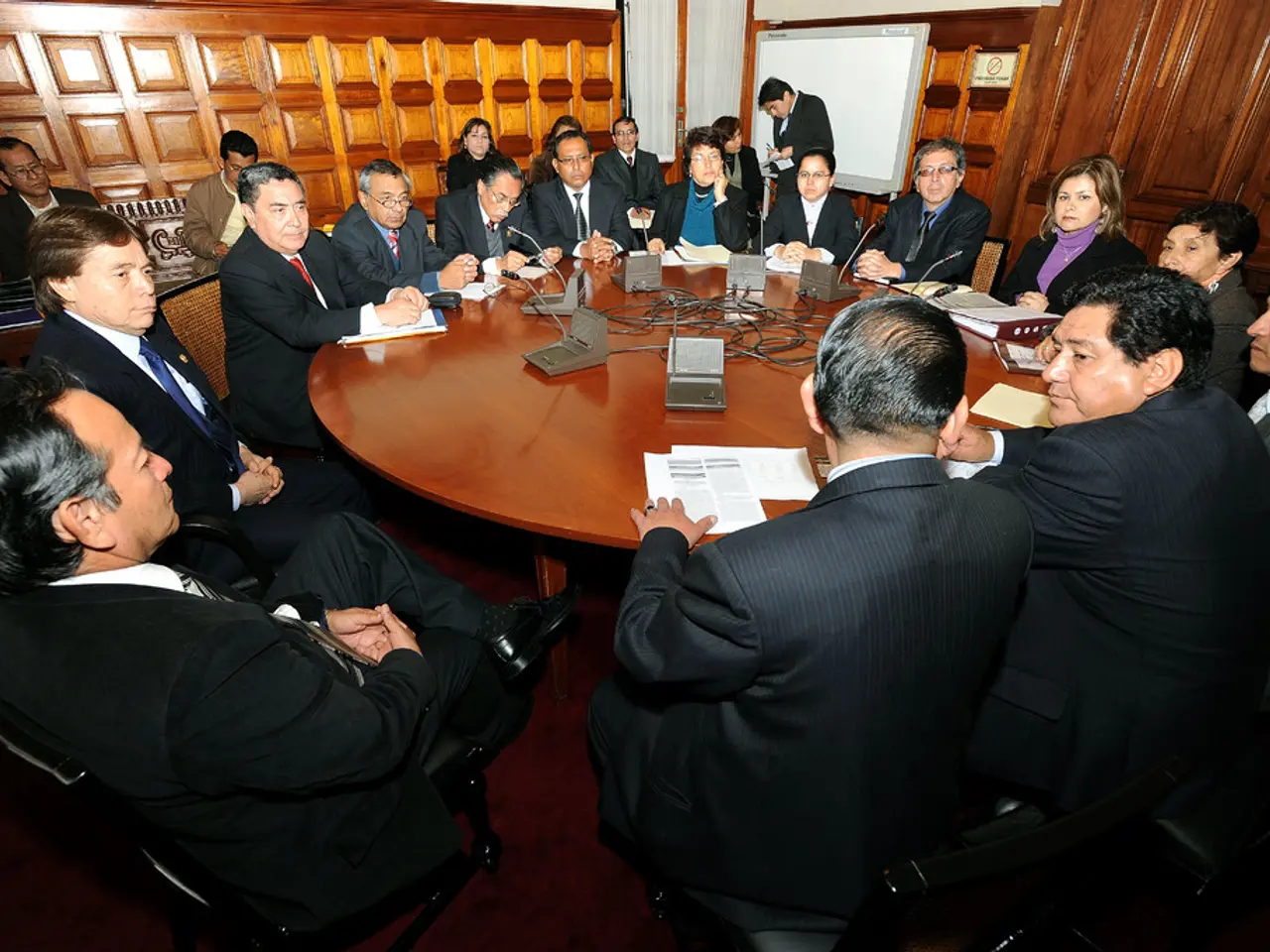Strategies for Effective Virtual Meeting Management
In the modern workplace, managing hybrid meetings has become a crucial skill for success. As a first-time manager, navigating this new landscape can seem daunting, but with the right strategies, you can lead productive, inclusive, and well-organised meetings.
Best Practices
A clear purpose and well-structured agenda are essential for keeping meetings focused and efficient. Decide who needs to attend to avoid unnecessary participants and set goals using the SMART framework. Establish communication guidelines to cater to different preferences and ensure accountability. Reserve in-person time for activities like mentoring or performance reviews, while using hybrid meetings primarily for collaboration, updates, or decision-making. Encourage interaction and teamwork beyond meeting times, and foster ongoing collaboration away from meetings to maintain strong connections.
Technology Checks
Invest in robust and user-friendly collaboration tools such as Zoom, Microsoft Teams, Google Meet, or Slack. Test equipment beforehand, checking audio, video, screen sharing, and connectivity for all participants. Ensure equal access for remote participants, using high-quality microphones, cameras, and dedicated facilitators.
Post-Meeting Follow-Ups
Summarise key points and action items promptly after the meeting and send out written summaries with clear decisions, assigned tasks, deadlines, and next steps. Organise quick follow-up meetings or check-ins to track progress, address any issues, and keep everyone aligned with objectives. Measure outcomes rather than time spent, focusing on task completion and project status. Keep communication channels open for questions or collaboration post-meeting.
By following these best practices, thorough technology preparation, and thoughtful follow-up, you can lead hybrid meetings that are not only productive but also enjoyable experiences for all participants.
Remember to pause speeches or presentations to allow participants time to assimilate information, and ensure each participant is clear on their expected actions after the meeting. Take notes, refine them, and share them with the team with clear expectations and timelines.
In a virtual meeting, it can be challenging to read body language, so be mindful of your language and structure your thoughts clearly. Show your human side by spending the first few minutes with brief introductions to help build trust and a collaborative setup. Establish a protocol at the beginning of the meeting to ensure everyone gets a chance to express their opinion without interruption.
Conduct a self-analysis of the meeting to identify what went well, what needs improvement, key learnings, and how to apply them to future meetings. Hybrid work has been shown to significantly reduce attrition rates, making it an essential part of modern management.
As team leaders become more confident in managing remote teams, hybrid meetings have become commonplace and are expected to continue in the future. Conducting a successful meeting is a requirement for earning the title of an effective manager. So, embrace the challenge and lead your team to success in the hybrid meeting landscape.
- By fostering mindfulness in your language and structuring thoughts clearly, you can effectively address the challenge of reading body language in a virtual meeting.
- Adopting remote work practices, such as conducting hybrid meetings, can lead to a significant reduction in attrition rates, making it crucial for modern management.
- To ensure productive hybrid meetings, incorporate elements of such as self-analysis, encouraging interaction, and using robust technology, as well as financial discipline by measuring outcomes rather than time spent.




